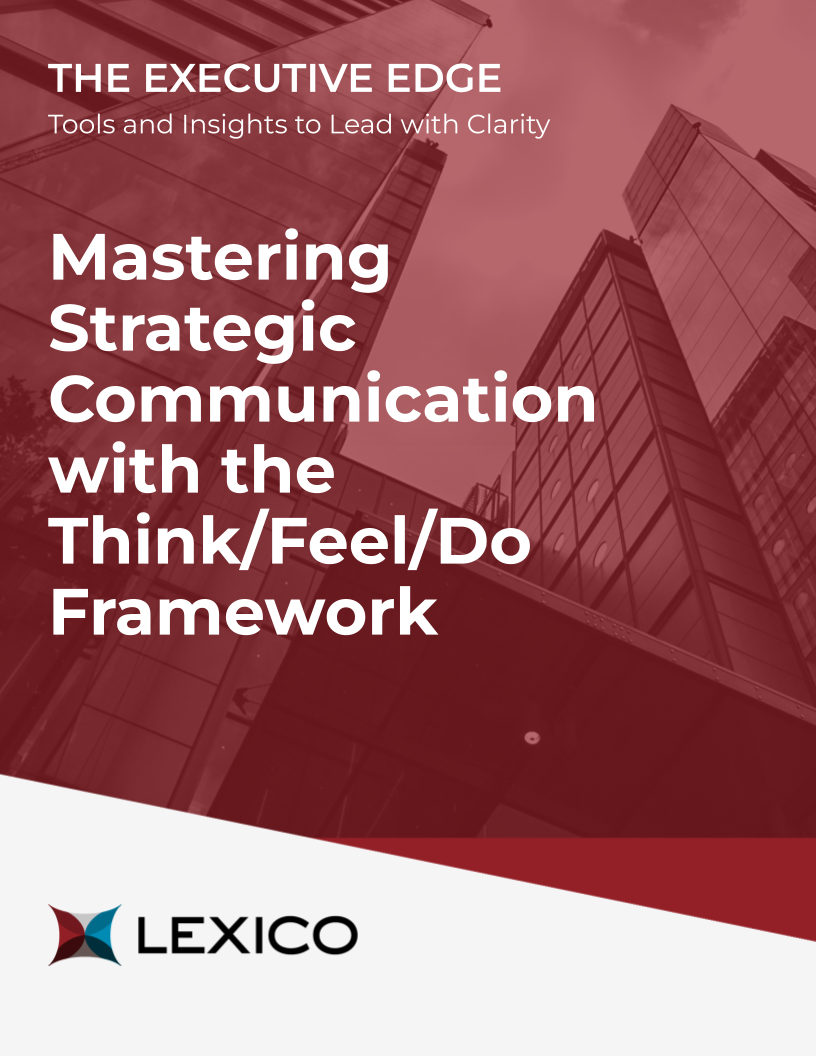Before your next big meeting or transformation pitch, consider this: will your message simply be heard, or will it move people to act?
We’ve all seen it happen: the strategy is solid, the timing feels right, the message seems clear, but instead of sparking momentum, it lands with a thud. The room stays still, buy-in falters, and resistance quietly starts to build. Why? Because in moments of high-stakes change, success depends less on what’s being proposed and more on how it’s being communicated.
And here’s the trap many leaders fall into: they focus on what they want to say or what they want people to take away. But that’s only half of it. The other half, and often the more critical half, is connecting to the listener. What will resonate with them? What matters in their world? What feels meaningful in their context? Clarity matters, but relevance to the audience is what makes communication stick.
At Lexico, we’ve seen this play out time and time again with our clients. The most compelling ideas fall flat not because they’re wrong, but because they’re presented through the wrong lens. Strategic communication isn’t just a nice-to-have. It’s the delivery engine of transformation.
So how do you make sure your message doesn’t just inform, but influences?
Enter: The Think/Feel/Do Framework
At first glance, it’s simple. But the simplicity is what makes it powerful.
This framework helps leaders design messages that don’t just share information. They shift beliefs, evoke urgency, and catalyze real action.
Here’s the core idea:
- THINK: What belief or assumption needs to shift?
- FEEL: What emotional tone will build connection or urgency?
- DO: What specific action should the audience take next?
The key is to work through these questions in your audience’s voice, not just your own. Don’t stop at “What do I want them to think, feel, or do?” Instead, ask yourself: If they were saying this out loud, how would it sound?
For example:
- We want them to think: this strategy is efficient.
- In their voice it might sound like:“Wow, I never thought about this problem from that perspective. I can see this being exciting for my team.”
Once you’ve written it in their voice, play out a few different scenarios. How might a skeptical audience respond? How might an excited audience respond? How might a cautious audience respond? Running these variations in advance helps you pressure-test your message and refine it so it lands the way you intend.
When you take this approach, your communication stops being a broadcast and starts becoming a dialogue. That’s when it has the power to move people.
Why It Works
The framework isn’t just a messaging tool. It’s rooted in neuroscience and behavioral insight. Studies show that emotion precedes logic in nearly every major decision, even in rooms full of executives.
And yet, many leaders still operate under the assumption that if they explain something clearly enough, people will get on board.
In reality:
- Without emotion, your message won’t be remembered.
- Without action, your message won’t create momentum.
- Without reframing beliefs, your message won’t stick.
When all three are working in harmony, that’s when ideas move forward, resistance softens, and transformation begins to take root.
Want the Full Framework?
Consider this a starting point. The full model equips you to put it into action. That’s why we created a high-impact quick-reference guide:
“Mastering Strategic Communication with the Think/Feel/Do Framework”
Inside, you’ll find:
- Tips to balance logic, emotion, and behavior in high-stakes conversations
- Practical prompts to apply before your next presentation or strategy pitch
- Executive-tested insights on how to create clarity, inspire belief, and mobilize action
- A Think/Feel/Do Planning Worksheet to help you build more intentional, outcome-driven messages right away
Ready to go deeper? Download the full guide!

Mastering Strategic Communication with the Think/Feel/Do Framework
Drop your email and get instant access to our exclusive PDF guide.
